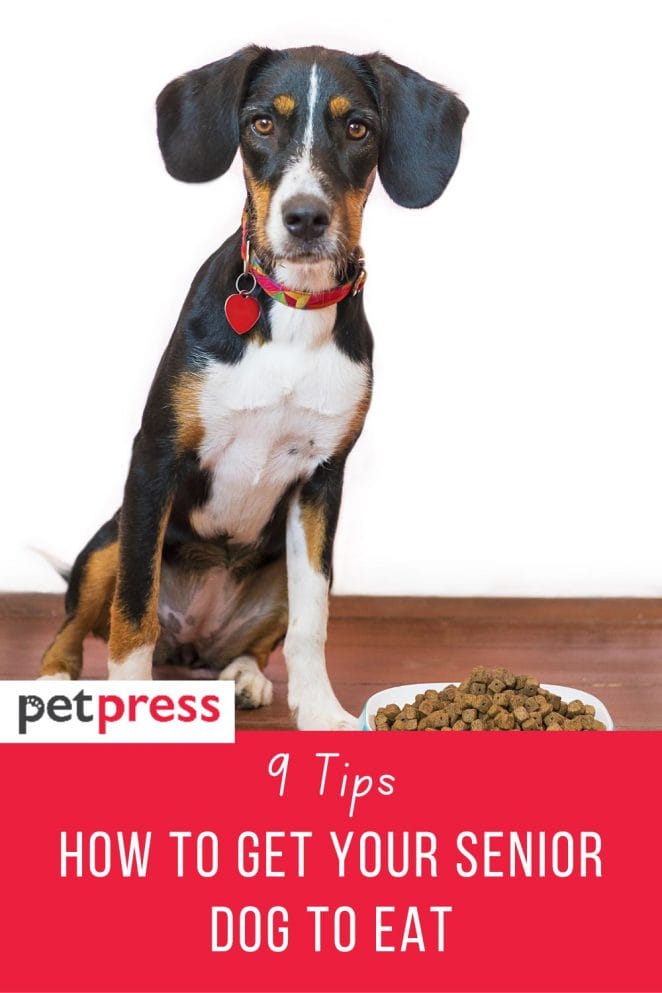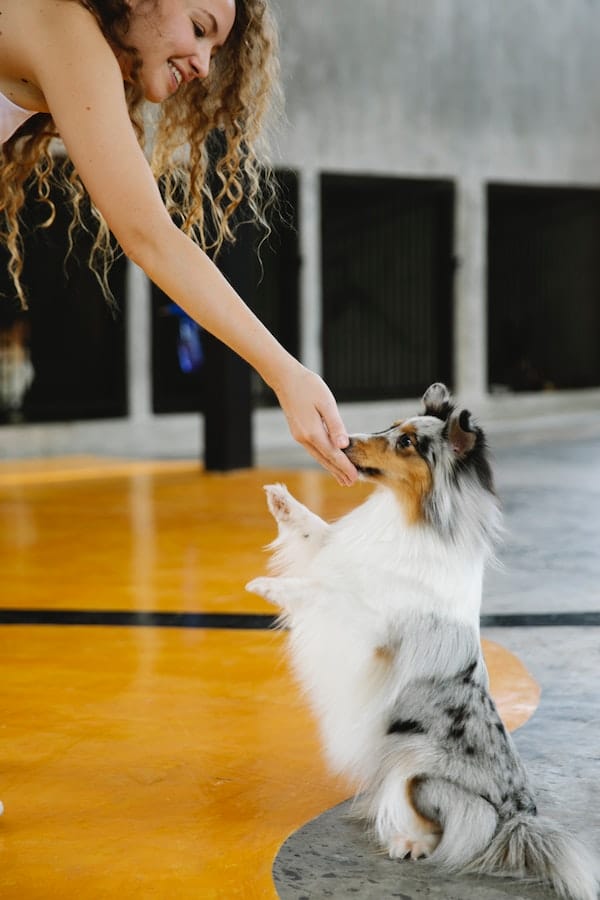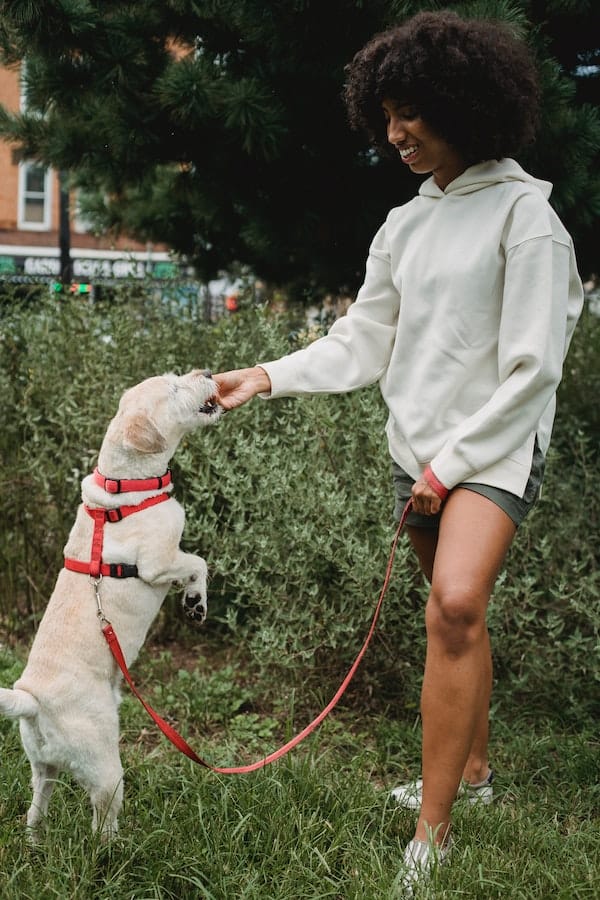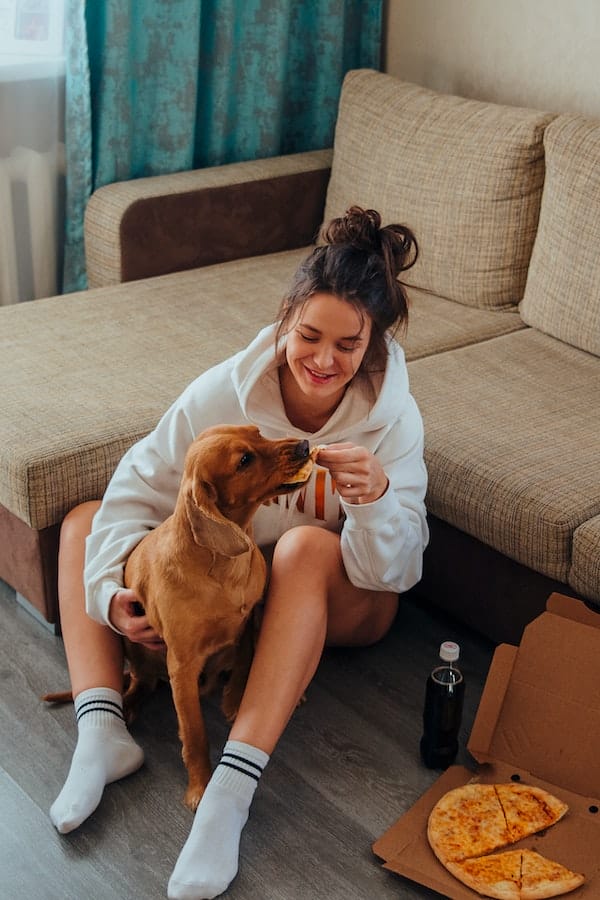
Hello there, all you proud pet parents! Is your senior pooch giving you a hard time at chow time?
Trust us, you’re not the only one having this issue.
Seeing your wise old friend refusing to eat can be stressful, we totally get it.
But, hey, don’t panic just yet!
With the right information and a whole lot of affection, we can surely help your elderly pup start wolfing down their food again.
Ready to explore this together?
Let’s jump right in!
Common Eating Problems
Absolutely, let’s break down the common eating problems our senior dogs might face.
Just like humans, dogs’ dietary needs and habits evolve as they age, and this can lead to several issues.
Let’s delve into it, shall we?
- Changes in taste and smell: Aging often brings along a decreased sense of smell and taste in dogs. If your dog’s favorite dish suddenly seems less appetizing to them, it could be because it doesn’t taste or smell as strong to them now.
- Dental problems: Our elderly four-legged friends may also face dental issues that can make eating a painful experience.
- Health conditions: Some senior dogs may suffer from health issues such as diabetes, kidney disease, or digestive problems, all of which can significantly affect their appetite.
- Medication side effects: Lastly, certain medications can affect your dog’s appetite. It’s akin to us feeling queasy after taking medicine.
Challenges of Getting a Senior Dog to Eat
Let’s delve into the common challenges that you might encounter while trying to feed your senior dog.
It can sometimes feel like you’re climbing Everest, but don’t worry, we’ve got your climbing gear right here:
- Age-related picky eating: As dogs age, they can become increasingly selective about what they eat. This picky eating could be due to a reduction in their taste and smell or just a change in their preferences.
- Decreased energy levels: Aging dogs also have lower energy levels, this reduced energy might make them less enthusiastic about their meals.
- Digestive issues: Digestive problems can also make mealtimes challenging. Whether it’s a sensitive stomach, difficulty digesting certain foods, or conditions like dysphagia (trouble swallowing), these could all impact their appetite.

Tips to Encourage Eating
Making mealtime a delightful experience for your aging companion is crucial. Let’s explore some tips to encourage their eating habits.
Switch to senior-specific dog food
Aging gracefully, our furry companions need a diet makeover too.
It’s like switching from fast food to a gourmet meal.
Senior-specific dog food is like a tailored suit; it’s designed to fit their changing needs.
These formulas are like a key that unlocks a treasure chest of nutrients, which are easier to digest for those aging tummies.
So, think of it as upgrading their dining experience with food that caters to their age-specific cravings.
Soft foods for dental issues
Imagine dining in a cozy, cushioned chair – that’s the comfort soft foods offer to dogs with dental problems.
For senior dogs with sensitive teeth, hard kibble can be like chewing on rocks.
Soft foods are like a gentle massage for their gums, reducing discomfort and making mealtime feel like a spa day for their mouths.
Fun with puzzle feeders
Mealtime can be more than just chomping down a bowl of food.
It’s like turning a regular meal into an exciting adventure.
Puzzle feeders are like the Rubik’s Cubes of the dog world, dispensing food piece by piece.
Your senior dog becomes a genius solver, working for every morsel.
It’s a mental workout that feels like solving a delicious mystery – the kind of challenge that leaves them satisfied and ready for a cozy nap.
Variety in meals
Just like we don’t want to eat the same meal every day, dogs appreciate variety too.
It’s like going to your favorite restaurant and ordering something different each time.
Spice up their dining life with a smorgasbord of flavors and textures.
It’s like taking their taste buds on a world tour, from chicken to beef, and kibble to wet food.
Who can resist such culinary adventures, even in doggy dishes?
Warm up the food
Picture a chilly day and the enticing scent of a warm, freshly baked pie wafting through the air.
Now, imagine that cozy aroma for your dog’s meal.
Warming up their food is like adding a dash of magic.
It’s as if you’re serving them a hearty, comforting meal on a cold winter night, and they can’t help but dig in, cozy and content.
Hand-feeding
It’s not just about feeding; it’s about creating a connection.
Hand-feeding your senior dog is like having a private chef in your home.
It’s an intimate, one-on-one dining experience.
As you feed them piece by piece, it’s as if you’re saying, “This meal is just for you.”
The bond that grows during this shared experience is like a warm embrace for both of you.
Regular feeding schedule
In the rhythm of life, routine is like a soothing melody.
A consistent feeding schedule is like a well-practiced symphony.
Dogs, like humans, thrive on predictability.
They want to know when to expect their culinary delights.
It’s like clocking in for a gourmet meal at the same time every day, and that kind of predictability brings comfort and anticipation.
Hydration matters
The food is great, but don’t forget about the drink menu!
Proper hydration is like a refreshing glass of water when you’re parched.
It’s essential for digestion, especially if your dog enjoys dry kibble.
Think of it as the perfect pairing, like a fine wine with a sumptuous meal.
Ensure fresh, clean water is always available – it’s the cherry on top of their dining experience.
Consult your vet
When in doubt, it’s like reaching out to the trusted expert – your veterinarian.
They’re the culinary artists of pet health.
If your dog’s eating issues persist or you’re facing any uncertainties, consult your vet.
They’re like the Michelin-star chefs who can whip up a customized menu and rule out any health problems.
It’s the ultimate recipe for a happy, healthy pup.

Homemade and Special Diets
Let’s explore the world of homemade and special diets for your beloved canine companion in a conversational, engaging list:
Homemade dog meals
Are those commercial dog food bowls getting a cold shoulder from your furry friend?
Time to put on your apron and become their personal chef.
Homemade meals allow you to take control of what goes into their dish.
It’s like cooking up a feast for a royal guest.
The aroma of your home cooking alone might make their tails wag with excitement!
Quality and variety
With homemade meals, you’re the master of the kitchen.
You can choose the freshest, highest-quality ingredients, just like shopping at a farmer’s market.
It’s like creating a gourmet menu with a variety of flavors and textures.
Your dog will be experiencing a culinary journey right at home.
Consult a pet nutritionist or vet
Now, before you put on that chef’s hat, it’s wise to consult the experts.
Pet nutritionists or your trusted vet can be your culinary advisors.
They’ll help you create a well-balanced menu tailored to your dog’s nutritional needs.
It’s like having a personal trainer for your dog’s diet, ensuring it’s perfectly suited to their health.
Special diets for medical conditions
Just like humans, dogs can have specific dietary requirements due to medical conditions.
For instance, lower protein diets can be a game-changer for dogs with kidney issues.
Consult your vet to understand your dog’s unique needs.
It’s like getting a prescription for a custom meal plan, designed to keep your furry friend healthy and happy.
Careful meal planning
Creating homemade meals isn’t a ‘throw everything in a pot and stir’ kind of deal.
It’s more like a meticulous recipe.
You’ll need to plan their meals to ensure they get all the necessary nutrients.
Think of it as crafting a culinary masterpiece, with their health in mind.
Enjoy the bonding experience
Preparing homemade meals isn’t just about food; it’s about bonding.
Your dog will adore the attention and care you put into their dishes. It’s like inviting them to a family feast, where they’re the guest of honor.
Monitor their health
Keep an eye on your dog’s health as you transition to homemade meals.
Regular vet check-ups are essential to ensure they’re getting all the nutrients they need.
Think of it as conducting health check-ins while you embark on this culinary journey together.

Conclusion
Facing challenges with your senior dog’s eating habits can certainly bring on a few gray hairs.
But remember patience, love, and a bit of creativity can work wonders.
Don’t hesitate to reach out to your vet or a pet nutritionist for advice.
After all, the golden years of your canine companion should be just that – golden.
FAQs
Numerous factors can cause your senior dog to eat less, from dental problems and medication side effects to loss of taste or underlying health issues.
Entice your dog by warming their food to enhance its aroma, adding a tasty topping, feeding them at regular times, or using puzzle feeders for a fun eating experience.
Senior dogs need a balanced diet rich in high-quality proteins, healthy fats, and fiber, with fewer calories. Consider senior-specific dog food or consult a pet nutritionist for homemade meal recipes.
While some human foods are safe for dogs, others can be harmful. If you’re considering feeding your dog human food, consult with a vet to ensure it meets its nutritional requirements and avoid any potentially harmful ingredients.


GIPHY App Key not set. Please check settings